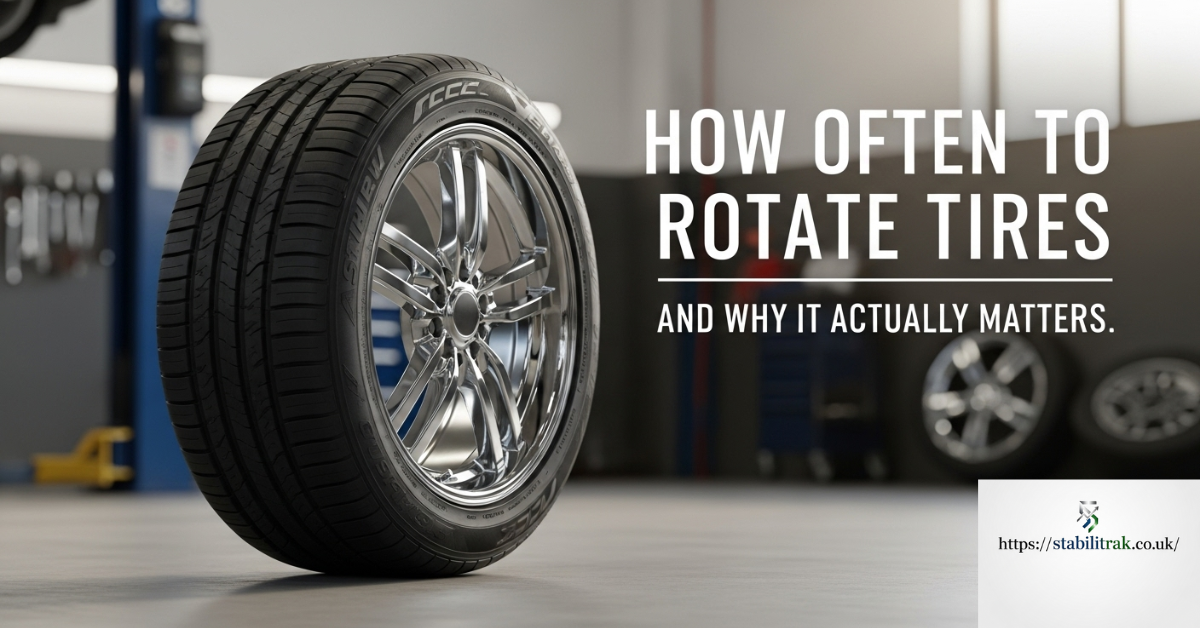Ever catch yourself wondering how often to rotate tires right when your car starts pulling a little to one side, or your steering wheel feels off? You’re not alone. A lot of drivers have no idea if they’re doing it too late, too often, or not at all. It’s one of those things no one really explains until something starts to feel wrong.
This post is here to clear that up. We’ll break down exactly how often you should rotate your tires, what factors can change that timing, and why it actually matters more than most people think. Whether you’re doing it yourself or going to a shop, you’ll leave with a clear plan to keep your tires lasting longer and your drive smoother.
WHAT IS TIRE ROTATION?
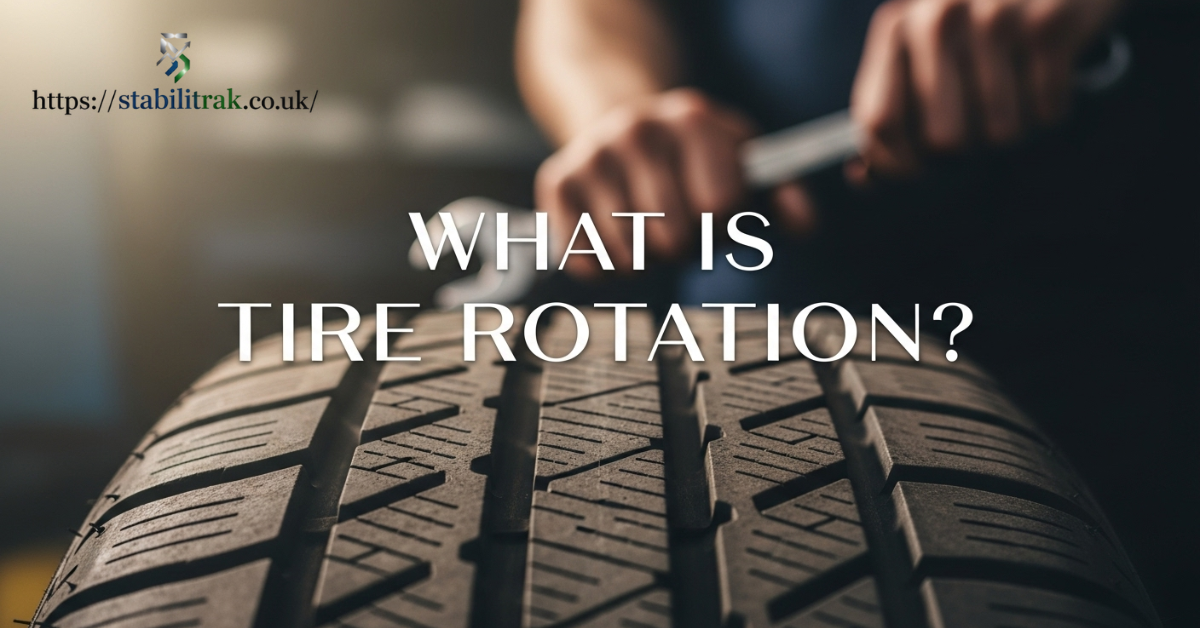
Tire rotation is the process of repositioning your vehicle’s tires from one wheel location to another according to a set pattern. The goal is to ensure even tire wear so that all four tires maintain similar tread depth and performance characteristics. According to whether your car is front-wheel drive, rear-wheel drive, or all-wheel drive, the tire rotation pattern differs.
In practice, tire rotation means swapping tires from front to back, side to side, or a combination of both. Typically, rearward cross and X-pattern rotations are often used for passenger vehicles. This process is often paired with a tire inspection and, in some cases, a tire balancing to ensure smooth handling.
WHY IS TIRE ROTATION IMPORTANT?
When you drive, each tire wears at a different rate due to factors like engine power distribution, cornering, and braking performance. In a front-wheel drive vehicle, the front tires often wear out faster because they handle most of the steering and acceleration forces. Without rotation, this uneven wear shortens tread life and can lead to vibration issues or compromised vehicle safety.
Rotating tires regularly improves traction, reduces road noise, and maintains predictable vehicle handling. In addition, many tire manufacturers’ warranties require proof of a tire rotation schedule to keep warranty coverage valid. If you neglect rotations, you may end up with early tire replacement costs.
Read More Article: How Much Do Braces Cost
WHAT TIRE ROTATION PATTERN SHOULD I UTILIZE?
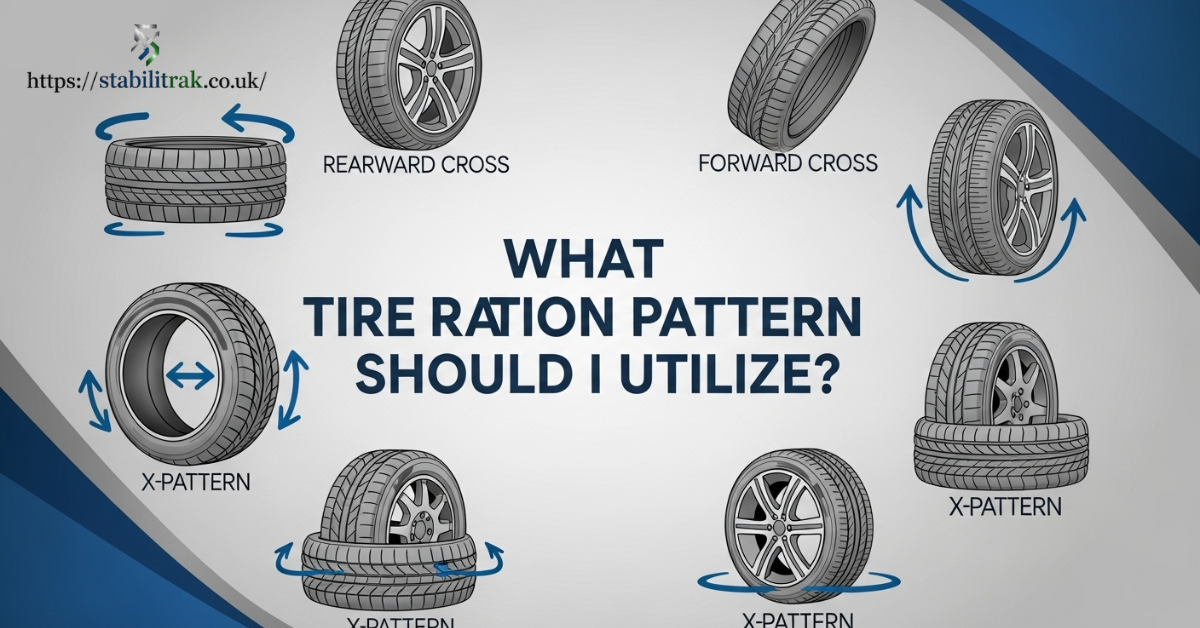
The correct tire rotation pattern depends on your drivetrain (FWD, RWD, AWD), the type of tires you have, and whether your tires are directional or non-directional. Non-directional tires with symmetrical tread can be rotated in multiple patterns, while directional tires must move front-to-back without crossing sides unless remounted.
Patterns like the rearward cross, forward cross, and X-pattern are popular for everyday passenger vehicles. Performance vehicles or those with staggered tire sizes require special approaches, like the side-to-side method.
In the case of tires with a uniform size and non-directional tread
1. REARWARD CROSS
Best for RWD or AWD vehicles. Rear tires move directly forward, while the front tires cross over to the opposite sides at the back. This spreads drivetrain stress evenly.
2. X-PATTERN
Tires rotate diagonally from front left to rear right and from front right to rear left. Ideal for FWD passenger vehicles and helps balance tread life.
3. FORWARD CROSS
Front tires move straight back, while the rear tires rotate to the front. This is the standard pattern for many FWD cars, promoting even treadwear.
In the case of tires with uniform size and non-directional design, together with a full-size spare tire
1. REARWARD CROSS (REAR-WHEEL OR 4-WHEEL DRIVE VEHICLES):
The spare is rotated in, usually replacing the right rear tire, with other tires following the rearward cross pattern.
2. FORWARD CROSS (FRONT-WHEEL DRIVE VEHICLES)
Here, the spare replaces the right front tire while the others follow the forward cross sequence. This ensures the spare ages evenly with the other tires.
SAMPLE VISUAL: FOR HIGH PERFORMANCE AND DIRECTIONAL TIRES
1. Lateral rotation (designed for different-sized performance tires fitted to the front and rear axles)
Front tires swap sides, and rear tires swap sides. This method avoids flipping directional tread while balancing tire condition.
2. FRONT-TO-BACK (FOR DIRECTIONAL TIRES)
Front tires move straight to the rear, while the rear tires move straight to the front. Works for directional tires without dismounting them from the wheels.
When should you rotate your tires?
Most vehicle manufacturer recommendations suggest rotation every 5,000 miles to 7,500 miles (or about every other oil change interval). For metric users, that’s around 8,000 to 12,000 kilometers. However, factors like driving habits, road conditions, and vehicle performance can shorten this interval.
If you often drive on gravel roads, carry heavy loads, or engage in off-roading, rotate more frequently, closer to every 3,000 miles. Always check your owner’s manual for the specific tire rotation frequency for your model.
Read More Article: Why Is My Car Shaking
Why would you need tire rotation?
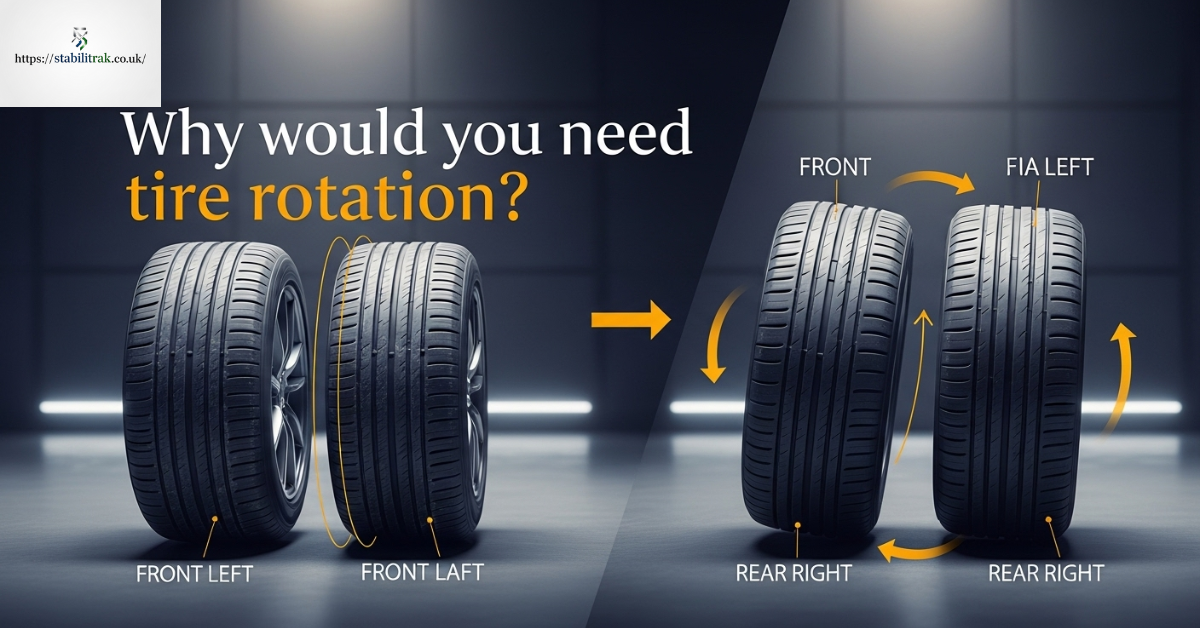
Without rotation, your tires can develop uneven wear patterns that reduce traction in hazardous weather. “This may cause increased braking distance, reduced cornering ability, and a rougher ride. Regular rotation also improves braking force distribution, keeps tire stress balanced, and may reveal hidden issues during a visual inspection, like tire damage or misalignment.
How to rotate your tires?
While you can rotate tires at home with the right tools, many drivers prefer a professional tire rotation at a tire shop. A qualified technician follows the correct rotation method, checks tire pressure, and ensures the wheel alignment is within spec.
At home, you’ll need a jack, jack stands, and a rotation diagram to follow. Patterns vary for AWD, FWD, and RWD systems, so make sure you’re using the right one for your drive type.
PREFERRED TIRE ROTATION PATTERNS
- Forward Cross (For FWD vehicles).
- Rearward Cross (For RWD and AWD vehicles).
- X-Pattern (Applicable to small trucks and cars with non-directional tires)
ALTERNATIVE TIRE ROTATION PATTERNS FOR ALL VEHICLES
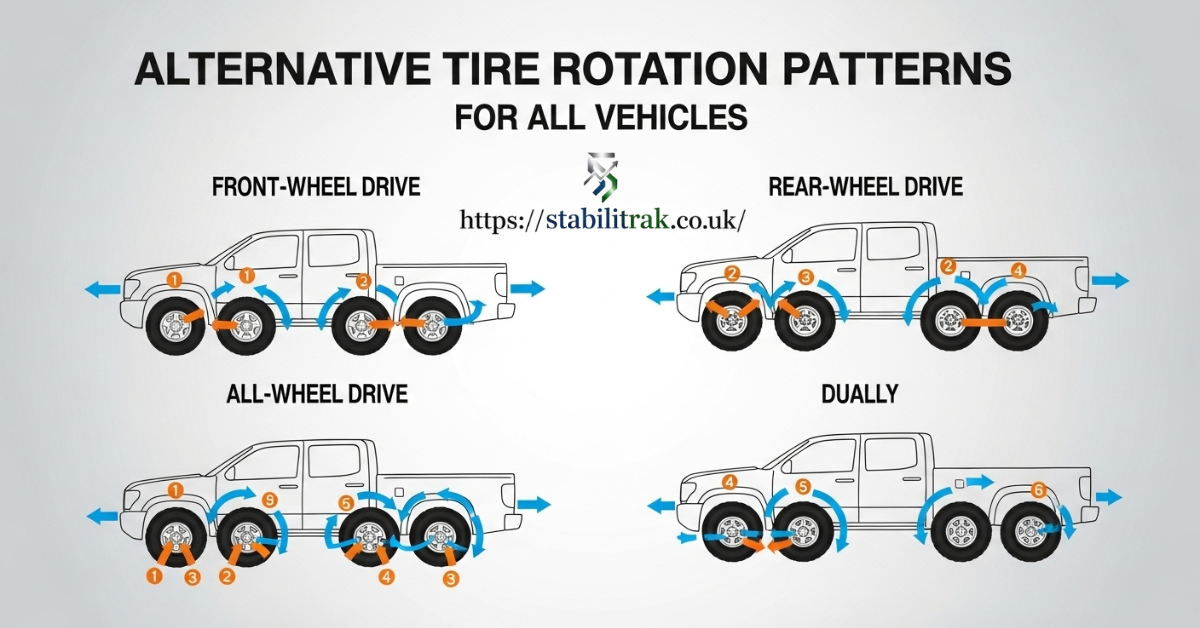
If you have a unique tread design, uneven wear, or a special tire profile, alternative patterns may work better. Certain vehicles need a side-to-side rotation when fitted with varying tire sizes on the front and rear axles.
TWO-TIRE ROTATION PATTERN
Used when only two tires show excessive wear. The worn tires swap sides while the other pair remains in place. This isn’t ideal long-term, but it can help temporarily.
ALTERNATE ROTATION FOR DIRECTIONAL TIRE WHEN DISMOUNTING TIRE FROM WHEEL IS NOT PRACTICAL
For directional tires that can’t be remounted, rotate front to back on the same side. This maintains the correct tread pattern direction.
DUAL WHEEL ROTATION PATTERNS
Common in trucks and heavy-duty vehicles, this involves repositioning inner and outer dual tires to balance tire lifespan.
FIVE-TIRE ROTATION PATTERN
If you have a full-size spare, include it in the rotation. This prevents the spare from aging unused and keeps tread depth consistent across all five tires.
Studded tire rotation
For winter tires with studs, rotate front to back on the same side to maintain even stud wear and improve traction on ice.
Tire rotation: (ask for professional advice)
Your driving style, the mechanical condition of the car, and the tire manufacturer’s guidelines all affect how you should rotate tires. When in doubt, get guidance from a service center or dealership to protect both your tires and your warranty coverage.
Tire rotations and your warranty
Many tire warranties require documented rotations at specific intervals. Neglecting tire rotations or not following the rotation schedule could cancel your warranty, forcing you to cover early tire replacement costs.
Conclusion
Knowing how often to rotate tires isn’t just a maintenance chore; it’s a smart investment in vehicle safety, tire care, and long-term savings. Stick to your maintenance schedule, use the right rotation pattern, and remember: evenly worn tires aren’t just safer, they also keep your car driving like new.
FAQs about Rotate Tires
How often do I need to rotate tires?
Most cars need tire rotation every 5,000to 8,000 miles (8,000 to 12,000 km) for even wear.
Should you rotate tires at every oil change?
Yes, many drivers do, since oil changes usually align with the tire rotation interval.
How many km should tyres be rotated?
Tires should be rotated about every 8,000 to 12,000 km, depending on driving conditions.
Can you rotate tires every 10,000 miles?
10,000 miles (16,000 km) is too long; rotation should happen sooner to avoid uneven wear.
Q: How often should to rotate tires AWD?
A: AWD vehicles should have tires rotated every 5,000 to 7,500 miles to protect the drivetrain.
How often to rotate tires, Reddit?
Reddit drivers mostly recommend 5,000 to 7,500 miles, or with every oil change, whichever comes first.
Is it ok to rotate tires every 10,000 miles?
It’s not ideal; waiting that long can cause uneven tread wear, especially on front tires.
Tire rotation cost
Tire rotation usually costs $20 to 50, though many shops offer it free with other services.
How often should tires be rotated and balanced?
Rotate every 5,000 to 8,000 miles; balance whenever you feel vibration or at new tire install.
How often should to rotate tires Tesla?
Tesla recommends tire rotation every 6,250 miles (about 10,000 km) or when tread depth differs.
How often to rotate tires FWD?
FWD cars need rotation every 5,000 to 7,500 miles since front tires wear faster.
Is tire rotation necessary?
Yes, rotation extends tire life, improves handling, and helps maintain even tread wear.

